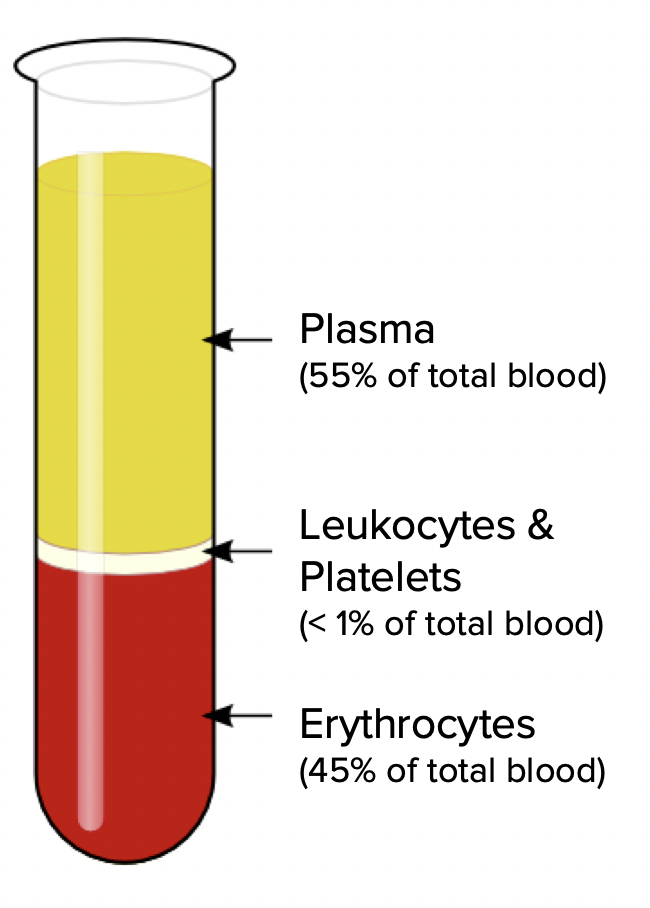Table of Contents |
Blood is a very important part of our body because it helps to transport oxygen and other important minerals and nutrients to our tissues and cells. Blood also helps to get rid of carbon dioxide from the body. In the human body, there are around five liters of blood pumping around the entire circulatory system.
Blood is made up of three main components: plasma, blood cells, and platelets.
| Components of Blood | ||
|---|---|---|
| Plasma | This component makes up around 55% of your total blood composition and is mostly water. Plasma transports blood cells, proteins, iron, glucose, gases, other important nutrients and ions throughout your blood. In addition, plasma contains proteins that aid in clotting, assist the immune system and compose certain hormones. |

|
| Blood cells | There are two different types: erythrocytes (red blood cells) and leukocytes (white blood cells) | |
| Platelets | Their role is in clotting blood. | |
IN CONTEXT
Have you or someone you know donated plasma before? How can you donate only one component of your blood?
What happens is the blood gets centrifuged, which basically means it gets spun very fast, causing the different parts of the blood to separate. Plasma settles out on top while heavier components such as blood cells and platelets settle to the bottom. Plasma is kept, and the blood cells and platelets are returned to the body.
As mentioned before, there are two types of blood cells:
Red blood cells are shaped like a thin disk with a dimple in the middle. This shape is important to their function; sickle cell anemia is a disease where red blood cells are misshapen.
Blood type is determined by antigens on these red blood cells. A person can have blood types such as A, B, AB, or O.
Leukocytes are white blood cells, and there are a total of five different types of white blood cells that all play a role in our body's defense system.
Source: THIS WORK IS ADAPTED FROM SOPHIA AUTHOR AMANDA SODERLIND